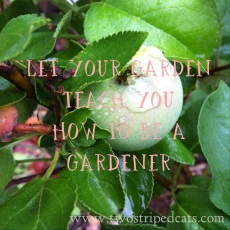I love doing all sorts of craft. Here are some ideas on greening up your crafting:
Use vintage fabrics or offcuts – charity shops are an excellent source of remnant fabrics and you’ll often find gorgeous vintage pieces, at very low prices. There are some fabulous vintage fabric sellers online too…check out one of my favourites here. Keep the tiny scraps of fabric left-over from your projects – cut up as you go and store in a bag/container to be used as stuffing.
Upcycle! Transform worn-out, stained or torn pieces into something new – just avoid the areas of the item that have these flaws. Old tablecloths, pillow cases, tea towels, woollen blankets, scarves, jumpers (woollen and polarfleece), jeans, shirts, and baby blankets have all found new life in my hands. Your own cupboards will no doubt be a source of such fabrics, but charity stores again are a useful place to look.
Build up a collection of sewing bits and pieces by sourcing second-hand and vintage supplies, again from charity stores and online (ebay and Etsy are excellent). These may have been used previously – eg, tools, buttons, remnant embroidery threads – or be old but unused and possibly still in original packaging – zippers, thread, needles, press studs, bias binding, etc! I get excited when I scour the sewing/crafting section of charity stores…the best part is that everything is a discovery…you just don’t know what you might find!
No need to buy brand spanking new knitting needles and crochet hooks, either! I’ve found all of mine on ebay and the local Vinnie’s and Salvo’s stores. Ditto for yarn. I try to tailor my projects to using what I have – patchwork squares, granny squares, softies and small items all lend themselves to using up scraps of yarn.
When second-hand or vintage isn’t available, choose supplies that are made of eco-friendly materials – organic/biodynamic cotton and wool, bamboo, hemp, pure wool felt and recycled PET felt. These are all available through online sellers.
Become an organised hoarder! Before throwing away an item ask yourself whether it could be used for craft. I store broken crockery in labelled containers waiting for the mosaic masterpiece I’m going to create one day! Although corks are recyclable, they are a versatile addition to your craft supplies – check out this idea for a cute home-made stamp. Bits and pieces such as beads, broken jewellery, buckles, lengths of ribbon, and magnets all lend themselves to craft.
If you are into paper crafts, collect pretty or interesting papers, card and the aforementioned bits and pieces – invitations, postage stamps, playing cards, greeting cards, board game pieces, and envelopes are fabulous materials for card making, scrapbooking and other paper projects. This Etsy site has an amazing array of such supplies available for purchase (all vintage/second-hand).
The key to not getting into mess and clutter by hanging on to all this stuff is to arrange items into categories (buttons, ribbons, stamps, corks, papers, fabrics, etc) and store them where they can be easily located. And if you need inspiration or ideas on what to do with anything from an old belt buckle to a pair of holy denim jeans…I give you one word only…Pinterest!


























